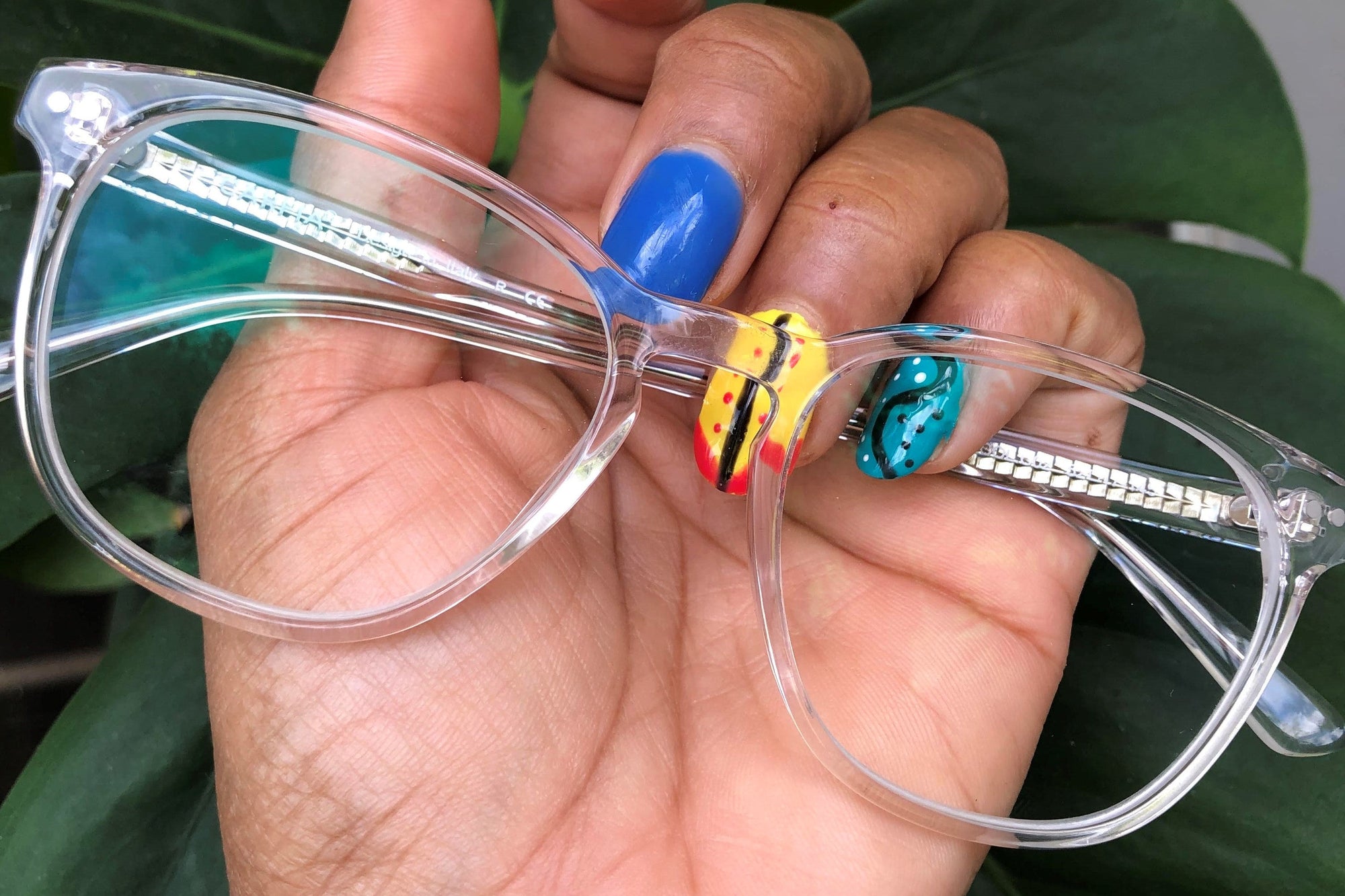Alloy glasses frame
Spectacle frames made of the alloy have relatively high hardness, are more resistant to friction, are not easy to fade, have a better texture, and are made of more styles, which are essential for fashionistas.
Glasses are frequently replaced.
In the United States today, there are more glasses than people. Counting prescription glasses, sunglasses, and over-the-counter readers, there are now more than 400 million pairs on the market. According to the Vision Council, an industry group, they swap out a brand new pair of glasses every two years on average.
Why are titanium glasses so expensive?
Light Weight. The term 'pure titanium' means a titanium metal material with a purity of more than 99%. A mineral containing titanium was found in 1791, but pure titanium was not produced until 19. Pure titanium glasses are lighter than titanium alloy glasses. For frames of the same design or appearance, titanium frames weigh only half as much as other ordinary metal frames, reducing the load on the bridge of the nose.
Blue light and anti-reflective lenses
They reduce the potential for cumulative damage to the eyes.Allowing the beneficial blue light through improves clarity, they reduce glare and reflection. They can improve your visuals and reduces eye strain and nighttime reflexes. They can reduce the symptoms of computer vision syndrome, including eye strain, eye strain, and headache.
Colored translucent frame
Colored translucent lenses have been popular since 2016. Some stars like a warm tan lens. Besides translucent lenses, what's popular this year is that the frames are made in a colorful translucent style. Wearing them can automatically cool down. Stella Mccartney 2020 spring/summer sunglasses are designed with colorful translucent material and a thick frame. In addition, a metal chain is added, which is all the popular elements this year.
What Are Trifocal Glasses?
Trifocal glasses and no-line progressive lenses are multi-focal glasses, meaning that their lenses offer multiple correction fields. Whether you have been wearing multi-focal glasses for a while, or you have just begun to look at options for correcting vision after 40 years old, you may have heard the terms trifocal or progressive glasses.
Trifocal glasses have three different corrective lenses within one lens to offer you intermediate, distance, and near correction. Trifocal lenses look and perform similar to bifocal lenses, with an added viewing zone to help correct vision in the intermediate field, and two visible lines where the viewing zones change.
Polarized vs non-polarized sunglasses
-
Non-polarized sunglasses generally only have the two basic functions of shielding strong light and filtering ultraviolet rays, and their efficiency in filtering ultraviolet rays is low. In our daily life, in addition to strong light and ultraviolet light, when light passes through uneven roads, water surfaces, and other places, irregular diffuse reflection light will be generated, which will cause blurred vision and fatigue in the eyes.
-
Polarized sunglasses can filter out this kind of light, only absorb the reflected light of the object itself, truly present what you see, make the field of vision clearer, and reduce visual fatigue. In addition, polarized sunglasses have a 99% blocking rate of ultraviolet rays due to their high-efficiency filter layer, which can effectively reduce the damage of ultraviolet rays to the eyes.
-
When judging whether the sunglasses are polarized lenses, you can rotate the sunglasses up to 45° clockwise. If the color of the lens changes at this time, and the color of the sunglasses returns to normal after turning the sunglasses back to the original position, then it can be judged that the sunglasses are polarized. And if you can’t see the change in the color of the sunglasses lens no matter how you turn it, then you can judge that the sunglasses are not polarized.











































